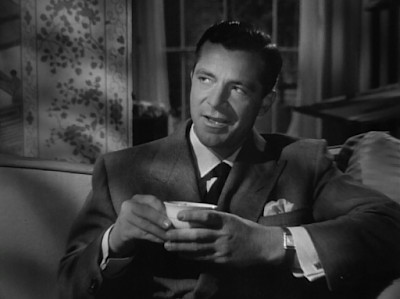January
19, 2018 (Sundance), June 22, 2018, release dates
Directed
by Ben Lewin
Screenplay
by Robert Rodat
Based on the book The Catcher Was a Spy: The Mysterious Life of Moe Berg by Nicholas
Dawidoff
Music by
Howard Shore
Edited by
Mark Yoshikawa
Cinematography
by Andrij Parekh
Mark Strong as Werner Heisenberg
Sienna Miller as Estella Huni
Jeff Daniels as Bill Donovan
Tom Wilkinson as Paul Scherrer
Giancarlo Giannini as Professor Edoardo
Amaldi
Hiroyuki Sanada as Isao Kawabata
Guy Pearce as Robert Furman
Paul Giamatti as Samuel Goudsmit
Connie Nielsen as Koranda
Shea Whigham as Joe Cronin
William Hope as John Kieran
John Schwab as Lefty Grove
Pierfrancesco Favino as Martinuzzi
Distributed
by IFC Films
Produced by Animus Films, Serena Films, Palmstar
Media, Finch Entertainment, Windy Hill Productions, Filmnation Entertainment
I was intrigued by The Catcher Was a Spy for many reasons
when I first heard about it: Paul Rudd starring in a dramatic role, World War
II espionage, a former Boston Red Sox baseball player turned wartime spy. What’s
not to like?
(This blog post about
The Catcher Was a Spy contains
spoilers.)
I enjoyed the laying
out of the plot and the examination of Moe Berg’s personality in the film,
although I understand that the film is much more kind to Berg than is the book.
For example, the book (which I have not read) explains that Berg became
something of a loafer and a ne’er-do-well after the war. For me, however, that
makes him perfect for the world of espionage and intrigue, perfect for a
shadowy, noirish world. The film also apparently lends more credence to the
idea that Moe Berg was gay.
For more
details about the book on which The
Catcher Was a Spy is based, click here.
The film opens with
the following white type on a black background:
In 1938, German scientists split the atom for
the first time and the nuclear age was born.
The Nazis gave the task of building an atomic
bomb to Nobel Prize–winning physicist Werner Heisenberg.
In response, the U.S. government sent a Jewish
baseball player to assassinate him.
His name
was Morris “Moe” Berg.
Based on
a true story.
Then the
black and the type fade to out-of-focus city lights, which come into focus with
two men, whose backs are to the camera, walking down a cobblestone street. It
is nighttime, but the streetlights give a soft yellow glow to the scene. More
type tells viewers that this is Zurich, Switzerland, in December 1944. Viewers
see one of the men cock a handgun, then walk away into the background on the
cobblestone street, with the other man watching him from the foreground. As the
man with the gun makes his way down the cobblestone street, the film’s title
appears over him.
This shot reminded me so much of the front covers of pulp novels, and, of course, so many classic films noir are based on pulp novels. I don’t know if the director intended it to be, but I thought the opening of The Catcher Was a Spy was an homage to the films noir and spy films from the 1930s and 1940s. In fact, several plot details reminded me of specific films noir, for example:
This shot reminded me so much of the front covers of pulp novels, and, of course, so many classic films noir are based on pulp novels. I don’t know if the director intended it to be, but I thought the opening of The Catcher Was a Spy was an homage to the films noir and spy films from the 1930s and 1940s. In fact, several plot details reminded me of specific films noir, for example:
◊ O.S.S. (1946), starring
Alan Ladd
◊ Cloak
and Dagger (1946), starring Gary Cooper
◊ Captain
Carey, U.S.A. (1950), starring Alan Ladd
There are probably several more films with similar
narratives, but these are the films that I have already seen.
A good part of The Catcher Was a Spy uses that soft
yellow light from the film’s opening, the light that mimics the aura of
streetlights. I remember noticing its use while watching the film, and I
thought it worked well. Afterward, while taking screenshots to use in this
post, I wondered if the technique might have been overused. Of course, most
people watching the film will probably never take a screenshot and never notice
this effect, and I don’t think I would have noticed how much it was used if I
hadn’t taken the screenshots. It does make me wonder if the director and the
cinematographer used the yellow lighting to soften and “age” the film a bit,
something like adding sepia tint to photographs to make them appear older than
they are.
Many online reviewers
weren’t very enthusiastic about the film or about Paul Rudd’s performance, but
I enjoyed The Catcher Was a Spy even
more than I thought I would. And I thought Paul Rudd was great in the role of
Moe Berg. I’m so used to seeing him in comedies that it was a welcome surprise
to see him in something so different. This film shows that he can handle
dramatic roles, too.
The most fun part of
watching The Catcher Was a Spy was
that it transported me back into the black-and-white world of film noir. If it
had been filmed in black and white, I might have mistaken it for a film noir
from the 1940s. The sets, the costumes, the level of intrigue—all of it worked.
It’s a good old-fashioned story, with tension that slowly builds until the
climactic scene. I had no idea what Moe Berg was going to do once he arrived in
Zurich or what he would do once he found Werner Heisenberg, the German
physicist who might or might not be working with the Nazis to build an atomic
bomb. And because I had not read the book by Nicholas Dawidoff, I wasn’t even
sure if Moe Berg would survive his assignment.








